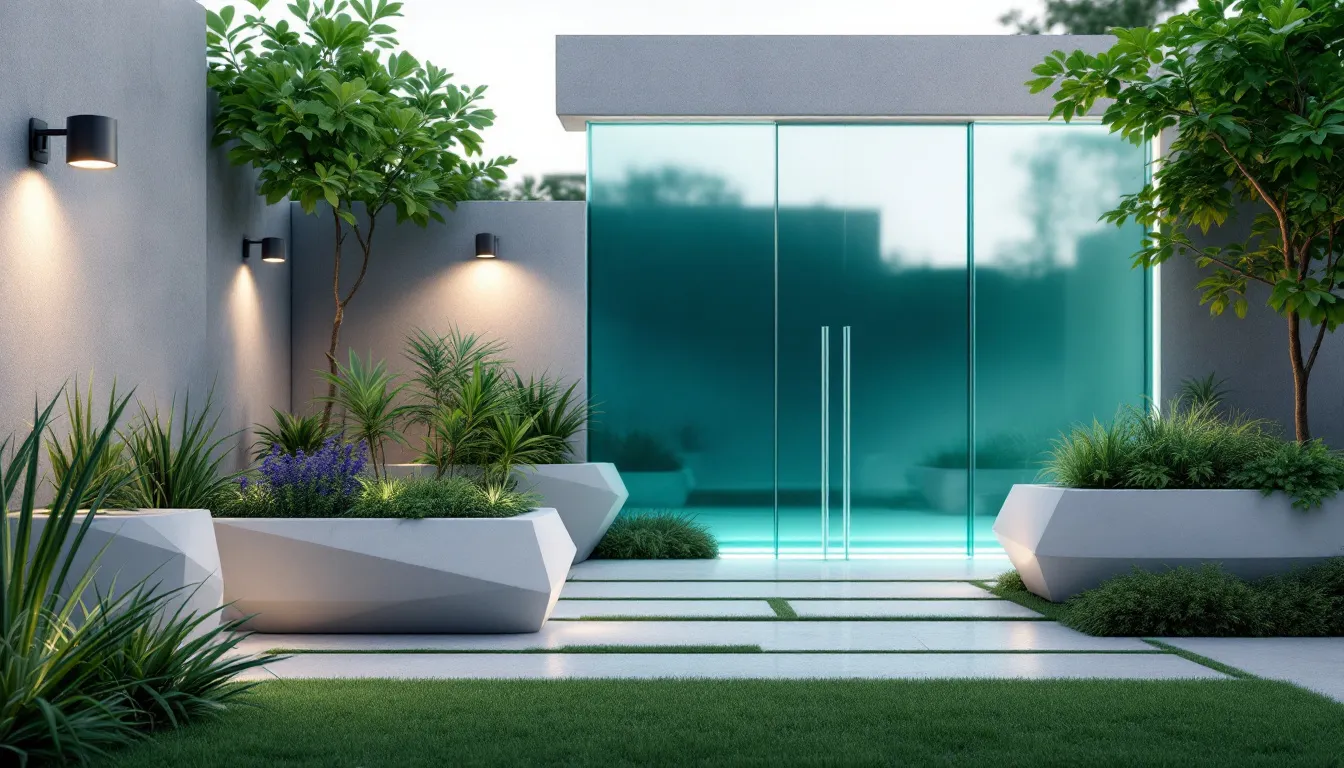Want to protect your home and garden from flooding in a simple way? In this article, you will learn about modern flood protection systems, such as flood protection doors and windows, that make flood protection easy, are particularly effective, and are easy to install. We present solutions for doors, windows, basements, and outdoor areas that will help you prevent flood damage.
Key Takeaways
- Flood protection for doors and windows is crucial to prevent damage; specialized flood protection doors and windows offer effective protection.
- Innovative solutions such as aluminum dam bar systems and waterproof basement constructions are important for protecting garages and basements from flooding. In the aftermath of storms, acute hazards such as water ingress can cause serious damage.
- Creating an emergency plan and having the right emergency equipment ready are essential for being well prepared in the event of flooding.
Flood protection for doors and windows
Doors and windows are often the weak points of a house when it comes to flooding and storms. Water finds its way through even the smallest openings, and without suitable protective measures, it can quickly cause significant damage to the door. Storms can further exacerbate the situation.
Here are some ways to prevent flood damage:
- Replacement of conventional doors with flood protection doors
- Use of mobile systems
- Retrofitting existing houses, which is often cheaper than repairing flood damage
These measures will help you better protect your home against flooding.
Protecting doors and windows is important not only for new buildings, but also for existing ones. Preventive measures are more cost-effective than dealing with the aftermath of flooding. Investing in flood protection pays off, as the follow-up costs of flood damage are usually significantly higher.
Flood protection doors
Flood doors are specially designed doors that prevent water from entering and thus protect the building. They replace conventional doors and provide a watertight barrier thanks to special seals and reinforcements. These doors are available in various sizes and designs so that they can be seamlessly integrated into the building architecture. There are both permanent and temporary solutions that can be used as required.
The installation of flood doors can be simple or complex, depending on whether it is a permanent or temporary solution. Regular maintenance is crucial to ensure the functionality of the doors.
These doors are made of robust materials such as aluminum or steel, which gives them high stability and durability. They not only offer protection against flooding, but also additional features such as thermal insulation and burglary protection.
Flood protection windows
Flood protection windows are another important measure for protecting buildings from water. These windows combine the properties of conventional windows with special waterproof technologies. They are particularly useful in regions prone to flooding and offer effective protection against flooding. Waterproof windows offer complete protection against water for at least 24 hours. They are completely impermeable to water during this period.
Flood protection windows should be installed by professionals to ensure they are watertight. These windows are made from high-quality materials such as aluminum and safety glass, which, together with special seals, ensure a high level of watertightness.
Regular maintenance and inspection of the seals are important to maintain the functionality of the windows. Flood protection windows not only offer protection against water, but also additional benefits such as thermal insulation and burglary protection.
Innovative solutions for garages and basements
Garages and basements are particularly susceptible to flooding because they are often located lower down and have large openings. Water ingress can cause significant damage to vehicles, stored items, and the building structure. Innovative solutions such as mobile flood protection systems offer effective protection here. These systems are flexible, easy to install, and reusable, making them a practical choice.
Modern flood protection systems combine preventive structural measures with temporary protective devices. These include waterproof basement constructions and automatic flood protection systems that activate automatically when the water level rises. These technological innovations offer effective protection against flooding and help improve flood protection with minimal maintenance.
Aluminum dam beams for garages
Aluminum dam beam systems are a proven method of protecting garages against flooding. These systems combine permanently installed aluminum profiles with flexible beams that can be quickly assembled as needed.
Aluminum dam beams are:
- Lightweight and easy to handle
- Quick and easy to install
- Offer high protection against water penetration
- Effectively keep water out of the garage
The flexibility of these systems allows them to be adapted to different structural conditions. They do not require any additional structural modifications and can be quickly installed in the event of imminent flooding. Aluminum dam beam systems are a cost-effective and efficient solution for protecting garages and other low-lying areas from flooding.
Waterproof basement construction
Waterproof basement construction is a permanent solution for protecting basements from water intrusion. These constructions use special materials that keep water out, thus preserving the integrity of the building. Drainage systems are crucial for keeping water away from basement rooms and preventing damage.
A well-constructed basement can withstand external pressure, especially during flooding. Flood pumps are also important devices for efficiently pumping water out of flooded basements and minimizing damage. These measures offer long-term protection and increase the value of the property through sustainable protective measures.
Preventive measures in the garden and outdoor area

A well-planned garden can also be protected against flood damage. Here are some solutions for preventing flood damage in the garden:
- Raising beds to effectively drain water.
- Using drainage ditches to drain water.
- Using natural barriers to stop water.
- Implementing special flood protection systems.
These measures will provide better protection for the garden against flooding.
Rain barrels and underground cisterns can serve as water storage tanks and slow down the runoff of rainwater. These measures help prevent flooding in the garden and outdoor areas and provide additional protection for the house.
Hydro sacks and sandbags
Hydro Sacks offer a flexible and effective way to divert water flows. They are easier to handle than traditional sandbags because they are activated by water and require no additional material. Upon contact with water, they swell and form a barrier against incoming water. They can be stacked on top of each other to achieve a higher barrier height.
Traditional sandbags are also a tried-and-tested method for creating temporary barriers against flooding. They are inexpensive and easy to handle.
Both systems offer effective protection and can be used as needed to protect your home and garden from flooding.
Flood protection walls and barriers
Flood barriers can be permanently installed and offer protection against water levels of up to one meter, depending on their design. Installation usually requires professional assembly to ensure effectiveness. These barriers are a long-term solution that offers high protection but can also incur higher costs.
Mobile flood barriers are a flexible and cost-effective alternative. They can be quickly deployed and easily dismantled when necessary. These systems offer a temporary solution and are ideal for use in gardens and outdoor areas.
Roof and facade protection against heavy rain

Protecting roofs and facades is crucial to prevent structural damage caused by heavy rainfall. Suitable materials and systems can significantly reduce the effects of heavy rain and flooding. A functioning roof drainage system protects the building from moisture damage, mold, and structural problems by efficiently draining rainwater and meltwater.
The use of emergency drainage systems is important to prevent water damage caused by overload during extreme rainfall. These measures help to protect the house and facade in the long term and extend the service life of the building.
Roof drainage systems
Modern roof drainage systems are designed to efficiently drain large amounts of water and reduce the risk of water damage. There are two main types of roof drainage systems: external and internal systems, with internal systems being particularly suitable for flat roofs. An effective roof drainage system can prevent water from accumulating on the roof and reduce potential damage especially when combined with flood protection doors and windows that keep excess surface water from entering the building during heavy rainfall or flooding events.
These systems are an important measure for protecting buildings from the effects of heavy rain. They help prevent moisture damage, mold growth, and structural problems by efficiently draining water and thus preserving the integrity of the roof. These systems also contribute to improving overall safety.
Facade protection
Protecting the facade is crucial to prevent damage caused by moisture penetration and weathering. Special coatings can reduce water absorption in facades, thereby reducing the risk of damage. Facade materials with hydrophobic properties help to minimize water penetration and extend the service life of the facade.
Facade impregnations offer long-term protection by protecting the masonry from water absorption and harmful weather influences. These measures are an important addition to structural flood protection measures and help to preserve the structure and appearance of the building.
Emergency plans and proper behavior during flooding
An emergency plan is essential to protect yourself and others during a flood. It should include clear instructions for evacuating and securing valuables. It is crucial to pay attention to local warnings and instructions from authorities.
Early planning and preparation can significantly reduce potential damage caused by heavy rain. Creating an emergency plan and knowing how to behave in the event of flooding are important steps to ensure safety and minimize damage.
Emergency equipment
A well-stocked emergency kit is crucial for being prepared for flooding. This kit should include essential items such as:
- Pumps for water removal
- Portable power generators
- Spare batteries for light sources
- Water treatment tablets
These useful additions are also important.
The equipment should be stored in an easily accessible location so that it can be quickly deployed in an emergency. Careful planning and regular inspection of emergency equipment ensure that all necessary materials and devices are ready for use when they are most urgently needed.
Behavior in the event of flooding
In the event of flooding, it is important to note the following points:
- Avoid endangered or cordoned-off areas to ensure personal safety.
- Follow the instructions of local authorities.
- Do not enter dangerous areas.
Safety should always come first.
During a flood, it is advisable to only leave the building if it is absolutely safe to do so. Effective communication strategies are crucial for warning affected persons in good time and giving them clear instructions.
Summary
In summary, flood protection involves a wide range of measures and technologies. From special doors and windows to innovative solutions for garages and basements to preventive measures in the garden and outdoor areas, there are many ways to protect your home. The right roof and facade protection and planning emergency measures are also crucial. By combining these measures, you can significantly improve the safety and integrity of your home and minimize the consequences of flooding.


